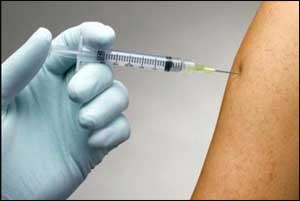- Home
- Editorial
- News
- Practice Guidelines
- Anesthesiology Guidelines
- Cancer Guidelines
- Cardiac Sciences Guidelines
- Critical Care Guidelines
- Dentistry Guidelines
- Dermatology Guidelines
- Diabetes and Endo Guidelines
- Diagnostics Guidelines
- ENT Guidelines
- Featured Practice Guidelines
- Gastroenterology Guidelines
- Geriatrics Guidelines
- Medicine Guidelines
- Nephrology Guidelines
- Neurosciences Guidelines
- Obs and Gynae Guidelines
- Ophthalmology Guidelines
- Orthopaedics Guidelines
- Paediatrics Guidelines
- Psychiatry Guidelines
- Pulmonology Guidelines
- Radiology Guidelines
- Surgery Guidelines
- Urology Guidelines
Synthetic virus may lead to more effective smallpox vaccine

Toronto: Scientists have created a synthetic horsepox virus that could lead to the development of a more effective vaccine against smallpox.
The discovery demonstrates how techniques based on the use of synthetic DNA can be used to advance public health measures.
Researchers from the University of Alberta in Canada produced an infectious horsepox virus, which they synthetically reconstructed using a published genome sequence and DNA fragments manufactured entirely by chemical methods.
The team went on to show that the synthetic horsepox virus could provide vaccine protection in a mouse model of poxvirus infection.
"This application of synthetic DNA technology has the potential to revolutionize how we manufacture complex biologicals including recombinant viruses," said David Evans, a professor at the University of Alberta.
"These methods advance the capacity to produce next-generation vaccines and offer special promise as a tool for constructing the complicated synthetic viruses that will likely be needed to treat cancer," said Evans.
The synthesized horsepox virus is the largest virus assembled to date using chemically synthesized DNA.
Horsepox - an equine disease caused by horsepox virus - is not a hazard to humans. It is closely related to vaccinia virus, the virus that was used as a vaccine to eradicate human smallpox 40 years ago.
While there have been no cases of naturally occurring smallpox since 1977, it remains a concern to public health agencies.
Current smallpox vaccines are used to protect first responders and military service members but are rarely used except in special circumstances. Due to the toxicity of most modern smallpox vaccines, Canada and the US have long discontinued immunizing whole populations, as was the policy prior to smallpox eradication.
Researchers had previously used more traditional recombinant DNA technologies to engineer a vaccinia virus with the aim of improving the treatment for bladder cancer.
The virus is an oncolytic virus, which means it was modified to selectively kill rapidly-dividing cancer cells while remaining safe for surrounding healthy cells.
In pre-clinical models, these viruses can infect and kill cancer cells while promoting the development of an immune response that is needed to prevent the cancer from returning.
However, future generations of oncolytic viruses will require a greater degree of modification that is possible using older technologies.
Synthetic biology offers a powerful tool for manufacturing these more complicated biological therapeutics.

Disclaimer: This site is primarily intended for healthcare professionals. Any content/information on this website does not replace the advice of medical and/or health professionals and should not be construed as medical/diagnostic advice/endorsement or prescription. Use of this site is subject to our terms of use, privacy policy, advertisement policy. © 2020 Minerva Medical Treatment Pvt Ltd